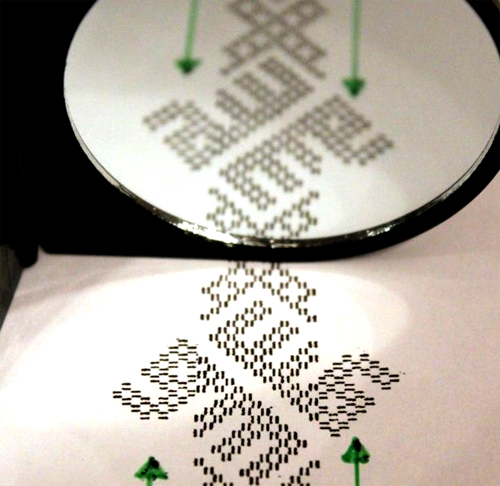When archaeologists originally analyzed the burial clothes found at Viking graves in Sweden, they were working during World War II and looking at the garments through the lens of a Nordic-focused ideology. They missed a fascinating detail. As textile archaeologist Annika Larsson discovered when she reexamined the silks, which had been in storage for decades, the burial clothes had woven bands of silk patterned with Kufic characters referring to Allah and Ali, one of the most important figures in Islam.
Larsson was studying the clothes from graves at Birka and Gamla Uppsala in order to recreate the patterns for a new museum exhibit, but she was puzzled by the designs. "I couldn't quite make sense of them and then I remembered where I had seen similar designs-in Spain, on Moorish textiles," she told the BBC. The designs, she found, were Kufic characters, an ancient form of Arabic script, and may have been an attempt to embroider a prayer onto the burial garments, made in the 9th to 10th century A.D.

There's a growing pile of evidence documenting the relationship between Viking culture and the Islamic world. Some Viking swords show evidence of metal-smithing techniques from the Arabian peninsula, and as The Guardian reports, archaeologists have found more than 100,000 Islamic silver coins and a woman's ring with "for Allah" inscribed in it, as well as a hoard that mingled religious objects from Christianity, Islam, and Thor worship. The people buried in some Viking graves also had Persian origins, according to DNA analysis.
Larsson's own work has examined the use of silk garments in Viking burials. In the Quran, silk garments are associated with the inhabitants of paradise. "In particular I think the idea in Islam of eternal life and paradise really appealed to [the Vikings]," Larsson told The Local. "We have written sources that attest to that, and it could be that the Vikings took this idea from the Islamic world."
In the past, garments like these were thought of as plunder. But, in Larsson's view, these newly discovered silk bands show that these clothes weren't plundered; they're typical Viking-age clothing that shows the influence of another part of the world on these wide-ranging travelers.

Source: Atlas Obscura